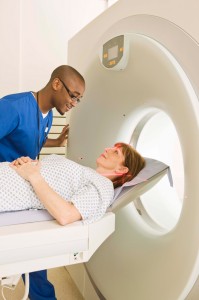 If you are one of the approximately 5 million Americans living with a non-healing or chronic wound, the Wound Care Center at Flushing Hospital Medical Center can help. Combining advanced diagnostic and surgical options with the expertise of a staff of nurses, podiatrists, and general, cosmetic, and vascular surgeons, the Center offers patients effective care when traditional measures fall short.
If you are one of the approximately 5 million Americans living with a non-healing or chronic wound, the Wound Care Center at Flushing Hospital Medical Center can help. Combining advanced diagnostic and surgical options with the expertise of a staff of nurses, podiatrists, and general, cosmetic, and vascular surgeons, the Center offers patients effective care when traditional measures fall short.
“Research has demonstrated that centers dedicated to wound care deliver better results for patients due to their staffs’ range of expertise and interdisciplinary approach to care,” says Frances Pugliese, Director of the Wound Care Center at Flushing Hospital. “Our patient success rate stands at 91 percent, which is well above the national average.”
Flushing Hospital Medical Center’s Wound Care Center is a leader in treating patients who need post-surgical care. Specifically, the Center treats patients with wounds caused by diabetes, weak circulation, trauma, vascular disease, and immobility. The facility offers personalized, individualized patient assessments and utilizes a variety of treatment options, including MediHoney, the first honey-based medical product cleared for wound care by the FDA.
For thousands of years, honey has been used around the world as a natural wound-healer. Today, thanks to scientific research and the backing of the United States Food and Drug Administration (FDA), the healing power of honey is regaining popularity and is available at Flushing Hospital Medical Center.
HOW DOES HONEY HEAL WOUNDS?
Honey is a great treatment option mostly because of its germ killing or antibacterial properties. However, honey works differently from most other antibiotics, which usually attack the cell wall of bacteria or shut down its internal functions. Instead, honey draws moisture out of bacteria and dehydrates it.
MediHoney is used on:
- First and second-degree burns
- Diabetic foot sores (ulcers)
- Leg ulcers
- Pressure ulcers
- Traumatic and surgical wounds
Most medical honeys currently on the market come from various honeys found in New Zealand and Australia, such as Manuka honey. In addition to being antibiotic and fluid absorbing, these honeys help dissolve dead tissue and prevent odor. Keep in mind that honey as a cure for wounds is not for everyone, especially for people with sever bee allergies.
To find out more about honey dressings or other treatments at Flushing Hospital Medical Center’s Wound Care Center, please call 718-670-4542.
All content of this newsletter is intended for general information purposes only and is not intended or implied to be a substitute for professional medical advice, diagnosis or treatment. Please consult a medical professional before adopting any of the suggestions on this page. You must never disregard professional medical advice or delay seeking medical treatment based upon any content of this newsletter. PROMPTLY CONSULT YOUR PHYSICIAN OR CALL 911 IF YOU BELIEVE YOU HAVE A MEDICAL EMERGENCY.

